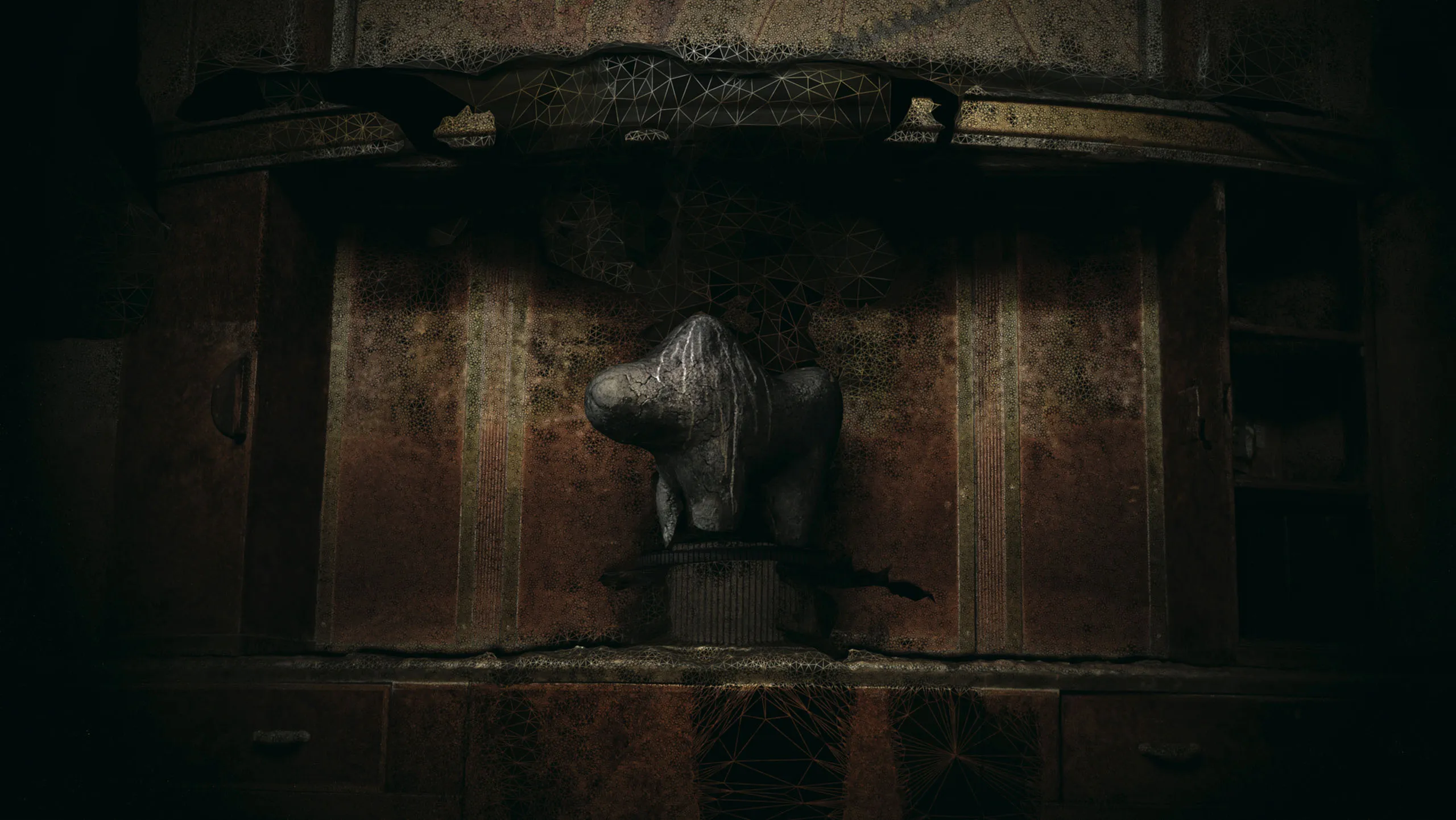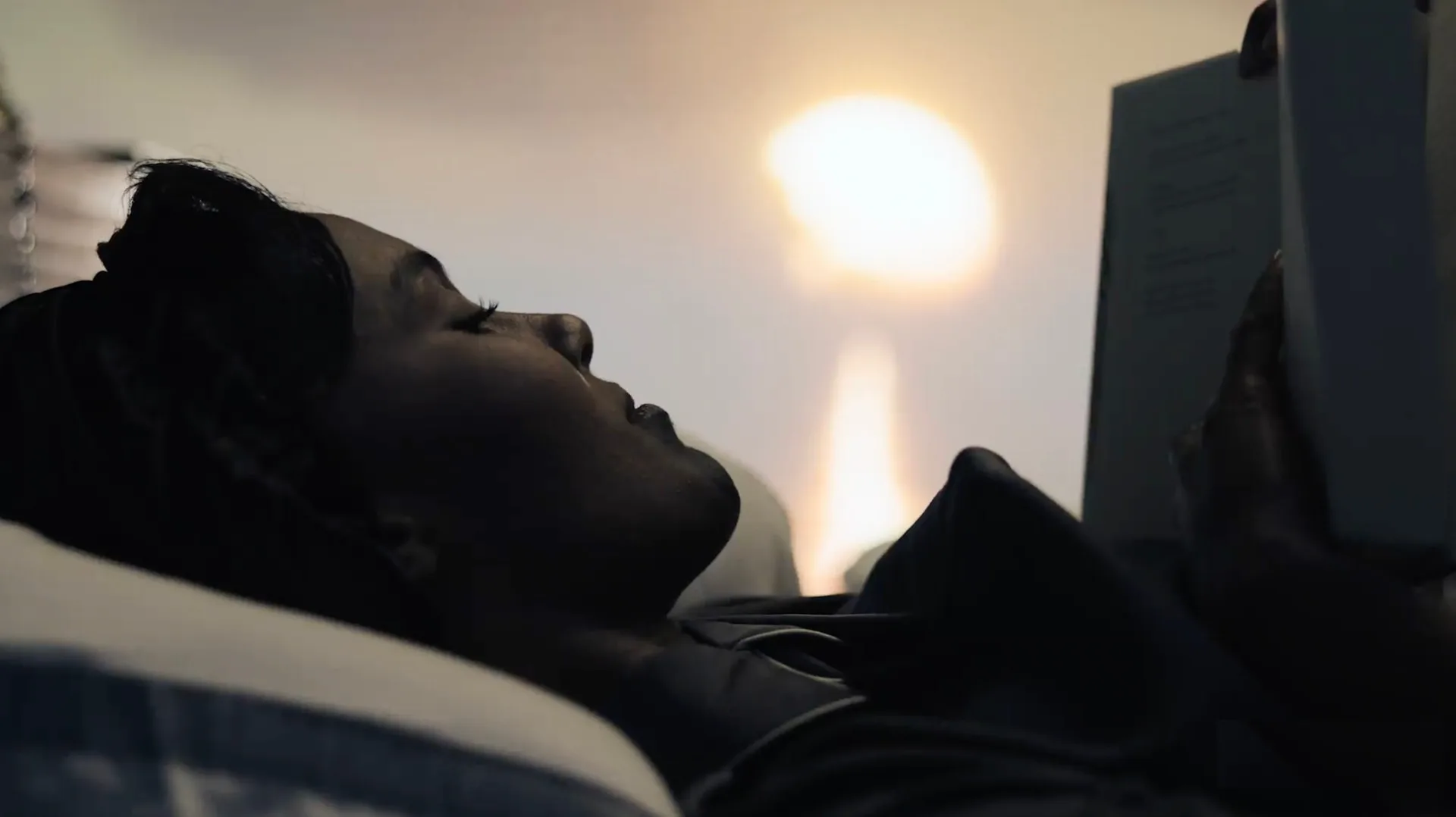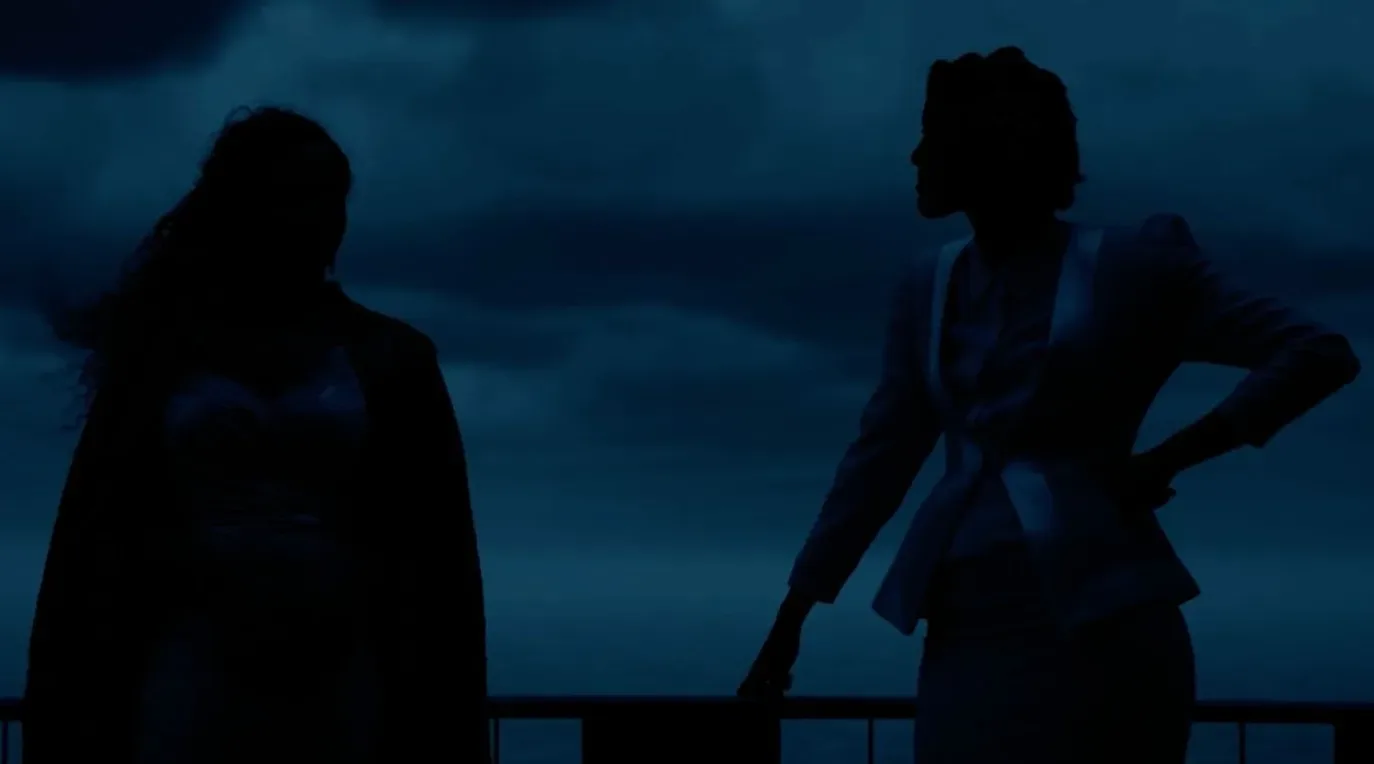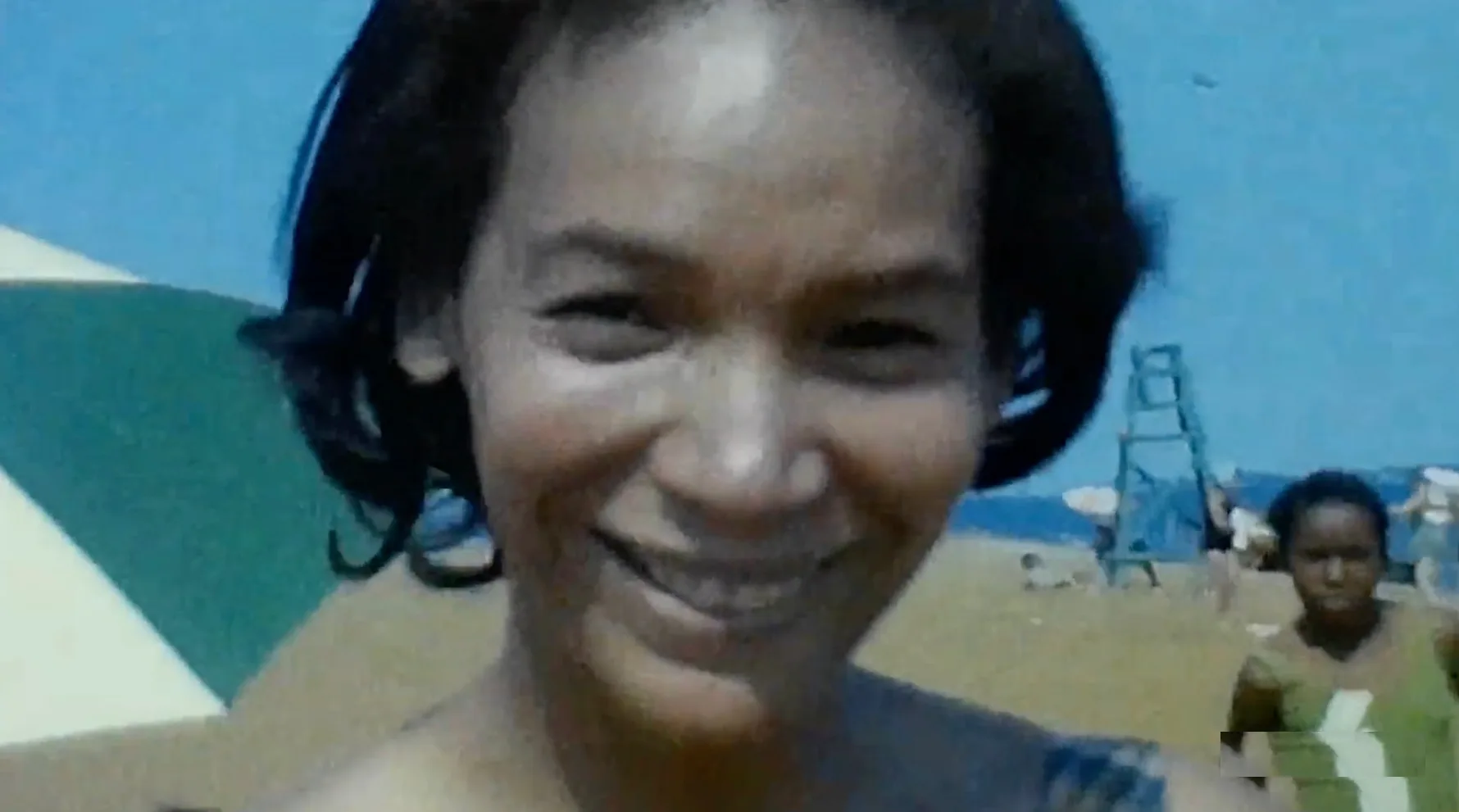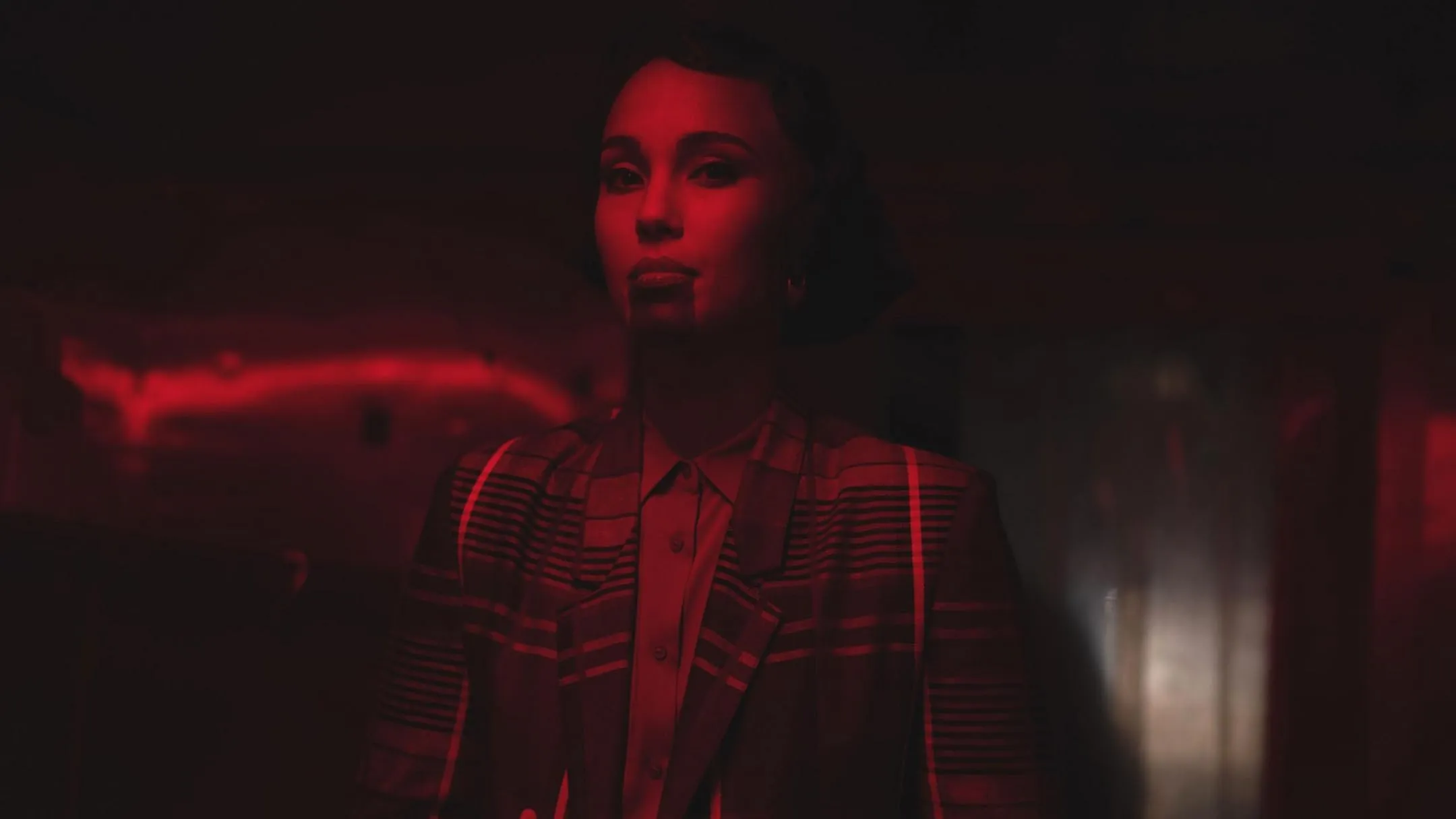BLKNWS: Terms & Conditions opens by presenting a multifaceted exploration of both personal memory and collective heritage. The film opts for an imaginative format, combining elements of documentary and experimental storytelling through its setup as a Black-focused news program set on a futuristic vessel. This narrative frame turns the vessel into a moving canvas, where archival snippets and speculative futures merge in a display that highlights the richness of Black experiences across continents.
The film situates itself at an intersection of historical reenactment and forward-thinking vision. Its spatial and temporal layering links archival visuals with futuristic settings, inviting viewers to consider historical events alongside cutting-edge artistic expression.
At the heart of the narrative stand two central characters: a determined journalist and a creative academic figure, both serving as guides through the film’s intricate portrayal of Black culture. They provide a human touch to an array of references that touch upon influential thinkers and seminal historical episodes. With its deliberate reference to renowned figures and moments, the film draws inspiration from diverse traditions and regional narratives, offering commentary that connects local legacies with global artistic inquiries.
Narrative Convergence: A Cross-cultural Examination
The film employs a dual narrative framework that pairs a speculative science-fiction account set aboard a futuristic vessel with reflective segments steeped in archival material. One narrative strand follows a futuristic newscast unfolding in real time, while the other offers recorded glimpses from cultural history. This structure creates a sequence where invented futuristic news broadcasts converse with diligently documented historical records, forming a loop that revisits itself in a dreamlike “film within the film” manner.
The storytelling unfolds in a fragmented manner, presenting bursts of personal family recollections side by side with detailed historical vignettes. Rapid segments presented in swift succession require continuous viewer attention as the narrative shifts through overlapping timelines, mixing intimate cultural meditations with meticulously recorded data. The film challenges the audience to reconstruct its narrative through subtle cues and self-referential loops, where the deliberate disjunction between a scripted future and empirical recordings invites active participation.
Attention to documented detail is evident through precise page citations and deliberate references to influential texts, notably drawing on Du Bois’ encyclopedic project. Specific numbered citations appear like guideposts within the narrative, prompting a reflective consultation of the rich intellectual heritage being portrayed.
Archival footage, social media excerpts, and reimagined news bulletins intermingle to form a collage that questions conventional storytelling formats. Certain scenes place carefully cataloged historical facts in juxtaposition with visually inventive, speculative sequences, resulting in encounters that both clarify and complicate the record of cultural memory.
These distinct narrative methods—each rooted in its own cultural convention—interact in ways that spark both alignment and divergence, urging viewers to consider the intricate dance between recorded history and the creative reimagining of that past.
Visual Fusion: A Global Canvas
The film opens a window into an imaginative visual world where a futuristic, polygon-structured vessel becomes a stage for both invented and archived images. Its design contrasts sharply with segments displaying historical visual references, creating a dialogue between anticipated tomorrows and legacies of the past. Deliberate manipulation of light and shadow crafts a dynamic atmosphere; deep, contrasting hues create spatial dimensions that mirror the film’s exploration of cultural memory.
Rapid sequences of editing reveal a rhythmic interplay among montage segments. Fast-paced cuts and carefully arranged visual juxtapositions build a kinetic experience that both challenges and charms the observer. This method calls to mind techniques that have redefined visual narratives in global cinema, offering images that pulse with historical significance and futuristic aspiration simultaneously, yet the film presents them in its own distinctive manner.
The integration of archival footage alongside modern imagery provides a layered approach to storytelling. Historical clips appear against a backdrop of contemporary visual styles, forging a connection between regional histories and forward-looking imagery.
This melding of eras is evident in recurring motifs, such as the vessel that serves as a symbol of renewal and reinvention. Its appearance reminds audiences of the power of transformation while inviting reflections on how art can mirror societal shifts.
The visual strategy prompts an ongoing dialogue about cultural heritage and technological evolution, presenting a canvas where symbolic imagery of the past meets modern reinterpretation—leaving an open question about the role of visual art in shaping our shared future.
Sonic Narratives: Synchronizing Sound and Scene
The film’s auditory landscape operates with a deliberate pulse that mirrors its visual rhythm, driven by a foundation steeped in techno and electronica. The music, rooted in the heritage of Black musical traditions, contributes an audible marker of its cultural origin. This carefully chosen soundtrack sets a pace that echoes the film’s shifting moods, from energetic bursts to reflective quietude.
The score’s impact unfolds through precise sound design that interlaces spoken word samples, ambient interludes, and rhythmic beats. Audio moments emerge as focal points, guiding emotional responses and prompting viewers to rethink the juxtaposition of past and future themes. This meticulous audio crafting serves as a connector between the film’s layered segments, aligning auditory cues with visual transitions in a way that fosters a unique synergy between sound and image.
Editing plays a vital role in this fusion, with abrupt cuts and fluid transitions marking shifts in tone and content. These transitions create a hypnotic cadence that mirrors the organized chaos found in the film’s visual montage. Auditory cues often signal thematic shifts—brief silences or minimalistic sound segments punctuate the unfolding narrative, underlining contrasts where dynamic soundscapes yield to reflective gaps.
At various points, the interplay of sound and editing produces moments that feel both spontaneous and precisely calculated, urging viewers to reconsider the convergence of cultural memory and futuristic vision. This auditory strategy leaves space for reevaluation, prompting an ongoing inquiry into the balance between sonic intensity and the quiet that occasionally punctuates its relentless drive.
Histories Intertwined: Challenging Traditions
Drawing on an extensive reserve of documented research, the film grounds its narrative in the tradition pioneered by W.E.B. Du Bois. Precise page references surface throughout, establishing markers that encourage viewers to reexamine established accounts while recognizing history as a fluid archive rather than a fixed record. These explicit citations instill a methodical structure, inviting reflection on written legacy alongside personal memory.
The film brings recorded experiences of migration, displacement, and persistent quests for self-determination into clear focus. Scenes portray a wide array of cultural histories that span continents and eras, prompting audiences to question how inherited narratives continue to shape current perspectives. In moments of detail that include noted page numbers and archival texts, the work invites an inspection of accumulated wisdom alongside everyday lived recollections.
In addition, personal stories merge with documented events, bridging intimate family histories with widely shared legacies. This interplay suggests that recollection resides at the intersection of individual experience and collective memory, urging a reexamination of identity beyond conventional confines. The alignment of personal memoir with established research reinforces the idea that memory can operate on both intimate and expansive scales.
Voices of scholars, curators, and cultural observers are embedded within a fabricated news broadcast format, a choice that redefines the presentation of historical documentation as an ongoing, ever-shifting process. Their contributions challenge accepted narratives, sparking debate on how past events are recorded and revisited. With each archival detail and personal interjection, the film opens a dialogue that questions static representation and calls for an appreciation of history as a continuous reworking of meaning.
Echoes of Ancestry and Renewal
The film centers Blackness as a main cultural lens, presenting a clear focus on stories that celebrate heritage while also confronting remnants of past pain. It uses a mix of personal remembrances and collective memory, merging the director’s familial legacy with widely shared cultural experiences. The narrative interlaces individual stories with historical markers, offering moments that stir feelings of pride alongside reflections on loss.
Scenes where the futuristic vessel appears function as visual symbols—a moving archive of both history and potential—invite comparisons to reimagined rites and traditions. This device serves to reframe established narratives about race and identity, proposing a reinterpretation of what has been recorded and remembered. The film’s imagery and layered storytelling challenge conventional portrayals, suggesting that recollection serves as a tool for reclaiming narratives that have been misrepresented or forgotten.
Throughout the film, there exists a dynamic interplay between moments of celebration and instances of solemn reflection. The director captures festive expressions of cultural resilience and unspoken acknowledgments of pain, inviting viewers to contemplate how memory shapes identity in ways that are deeply personal yet widely experienced, leaving space for ongoing reflection.
Lingering Echoes: Reflective Impressions
The film leaves an unmistakable imprint on its audience through a daring mix of inventive narrative techniques and a rich cultural fabric. Its layered construction, drawing on diverse historical threads and futuristic reinterpretations, provides viewers with a multidimensional experience that calls for repeated exploration. The experimental approach invites divergent readings, rewarding both attentive and instinctive viewers with fresh insights on every watch.
Its imaginative framework challenges established storytelling formats, opening up creative possibilities that could shape the way future cinematic endeavors unfold. By forging unexpected connections between personal memory and collective history, the work sets a precedent for projects that aim to reframe familiar narratives through the lens of cultural specificity. The film’s ability to spark thought, stimulate emotional engagement, and encourage intellectual inquiry simultaneously underscores its significance in a global artistic conversation.
A viewer is left with a sense of wonder as the film oscillates between striking visual statements and moments of gentle introspection, suggesting that history and imagination can exist in a vibrant dialogue. This invitation to engage deeply, both emotionally and intellectually, marks the experience as one that challenges and enriches, leaving the door open for endless reinterpretation and discovery.
The Review
BLKNWS: Terms & Conditions
This film merges archival rigor with futuristic imagination, delivering a stirring experience that confronts cultural legacies through inventive storytelling. It surprises with every shift, inviting both emotional and intellectual engagement. The experimental narrative and rich references spark fresh conversations about identity and history, offering a provocative watch that leaves room for varied interpretations.
PROS
- Inventive narrative structure that intertwines past with futuristic visuals
- Rich integration of archival material and cultural references
- Engaging auditory and visual elements that work in concert
- Provokes thoughtful reflections on identity and history
- Bold experimental approach that invites varied interpretations
CONS
- Fragmented narrative may challenge casual viewers
- Heavy reliance on symbolism can be perplexing
- Requires active engagement and repeated viewings









































